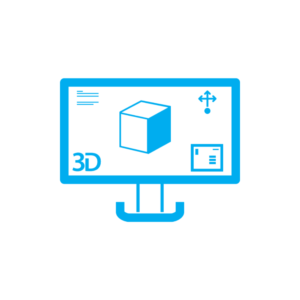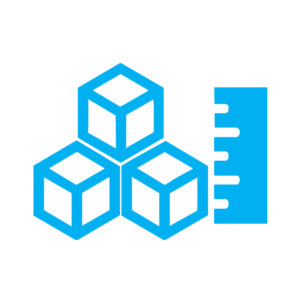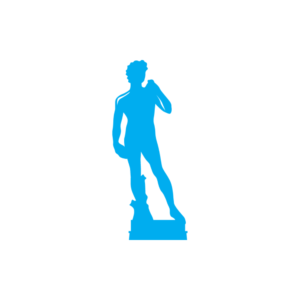3D Scanning

3D Scanning
Non-contact survey of artifacts or people by 3D laser scanner, output in stl format

Data reconstruction
Post edinting. STL, IGES, PARASOLID, STP and other file extensions

Dimensional control
On the total of the part or on the specific tolerances with measurement report

Virtualization and replication
3D Scan
Data restruction and management
This is a post-editing service with dedicated software of the scanned data for the reconstruction. It starts from the point cloud of closed or parametric surfaces if required, suitable for processing in a CAD environment or with machine tools.
Dimensional analysis
The evaluation of the scanned product and comparison with the reference sample to obtain a dimensional check on the total part, reconstruction of the scanned part and verification of compliance with the specific tolerances indicated in the production drawings.
Virtualization and replication
The post editing of the reconstructed files for reproduction in a virtual environment, for example for the creation of online catalogs.
Post editing of reconstructed files for the creation of artefacts, works or for replicas in plastics, wood or bronze, both for industrial purposes for series and pre-series and for communication and marketing purposes for the creation of gadgets such as creation of replicas for sale in museum shops.
What is it? And what is it for?
3D Scanning, unlike Digitization with a probe that detects a discrete number of points, captures the object a finite but enormously greater number of points. Thus, the geometry can be outlined and detected very accurately.
The absence of contact also makes it possible and precise to survey even on surfaces that by their nature (too soft) or uniqueness (too delicate and precious, as in the case of artistic goods) do not allow the use of a probe.
The first result is a point cloud transformed by software into an STL file. This can be used directly with additive manufacturing systems (3D printing) or through the CAM (Computer Aided Manufacture) for CNC machining.
If, it is necessary to make changes, the STL file is reworked to build a file in CAD format that can be worked with Reverse Engineering techniques, to be then transferred to the CAD 3D (Computer Aided Design) environment for modeling the changes. Reverse Engineering is the most complete process which starts from the 3D scanning for the survey of a shape. Traditionally it is made by hand or a detail of which there are no 3D or mathematical models. Reconstruction in the CAD environment, the product can be created in order to proceed with the engineering (mold design, modifications etc.).
What it is used for
3D scanning is used for relief of shapes, for the realization of molds (plaster sculptures, resin / plasticine models), Reverse Engineering for relief of forms, for design (construction of casings, housings, redesign, vehicle / motorcycle customization).
3D scan can also be used for relief of shapes for particular reconstruction (mechanics, historic cars / motorcycles, damaged machine parts to be rebuilt) or for relief of shapes for cultural heritage (statues, jewelry, artifacts in general).
Reverse Engineering for relief shapes for “made to measure” production (clothes, shoes, dental reliefs, masks for theatrical make-up, prostheses), 3D scanning to create 3D archives of shapes (rings and jewelry in general, footwear “foot shape”, dental impressions, teeth).
Application
The need to reproduce the geometry of the elements created manually by the modelers is one of the main needs of the current production structures that require an accurate mathematical model (CAD3D). This is for the prototyping phase and for the subsequent development and manufacturing processes including the relationship with the providers.
On the other hand, most of the style creations and the complexity of the shapes defined by industrial designers, which cannot be described with standard geometric entities, make it necessary to adopt a system capable of “translating” everything into the “language” of industrial processes.
The application of Reverse Engineering (RE) techniques makes it possible to recover existing forms and subsequently carry out modification operations on them. This activity also makes it possible to recover the wealth of forms (physical models) that each company possesses by inserting them in a database where they will remain until they are deemed useful.
The term Reverse Engineering (RE) identifies a methodology that allows, starting from the physical model, to go back to its mathematical description. It therefore represents an evolution of what happened in the past in the mold construction workshops, with the first copying systems that they only allowed the replication without modification of the masters made in the model shops.
The need to fully reproduce the mathematical model of the solid object in question can be felt in various circumstances:
In the case of archaeological finds, 3D scanning can provide a quick and efficient solution for duplicating and storing samples that are difficult to manipulate. It can create a database, accessible even at considerable distances, and finally it can be useful for creating packaging.
In the industrial field, Reverse Engineering allows you to close the loop between CAD-CAM and rapid PR prototyping, and very often it is the starting point for a new project, or for the aesthetic renewal of the product.
In the biomedical field, Reverse Engineering allows you to prepare models of organs and anatomical parts, useful for the preparation of prostheses or for staff training.
3D scanning allows the creation of models suitable for the human body (footwear, gloves, helmet, etc.).
Reverse Engineering allows you to generate a CAD model if you have the model made by hand by the model maker, or by the designer.
3D scanning allows the creation of standardized component archives useful for accelerating design operations in the industry.
With the 3D scanning systems a set of surfaces that approximate the solid are extracted from the cloud of points. The file containing the information obtained from the detection device must be preliminarily optimized through appropriate filters; only subsequently can the point cloud be converted into a neutral format (IGES, VDA, STEP,…) or imported directly into the software used for modeling.
To this end, the intervention of an operator expert in Reverse Engineering techniques who operates by checking and correcting any errors is essential. Starting from the mathematical model created, the subsequent operations allow to generate STL models to be sent to the prototyping systems or to generate graphic formats for subsequent treatments (rendering) or to generate the database of the acquired shapes.
Point detection methods and devices for 3D Scanning and Reverse Engineering activities
Speaking of systems for the detection of the points on physical models immediately thinks to Coordinate Measuring Machines (CMM) or to the mechanical feelers mounted on numerically controlled milling machines. Indeed, these are very widespread, reliable and precise, but are beginning to be replaced by new, equally precise, non-contact systems which partly solve the problem of the slowness of traditional systems.
3D Scanning systems are normally made up of:
- Probing device with or without contact, i.e. by the set of transducers and probes that allow to detect points.
- Support and transport apparatus, which allows the positioning of the transducer in space, detecting its position and orientation, thus allowing the survey of objects of various shapes and sizes.
- Positioner of the piece consisting, if any, of a rotating table on which the component to be detected is locked.

